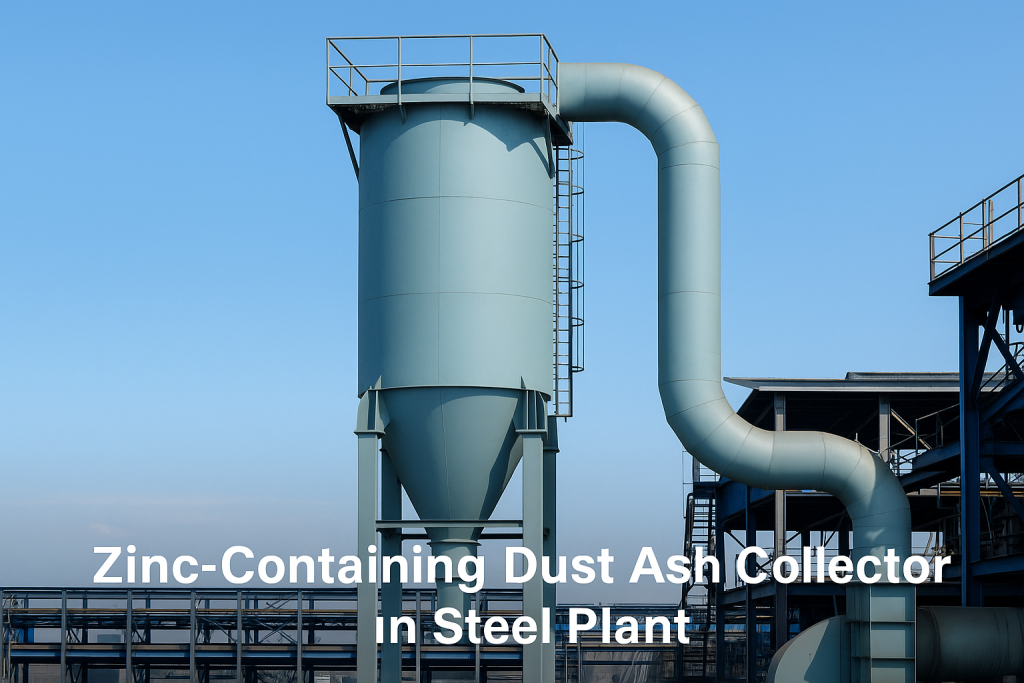In steel production, especially during sintering, electric arc furnace (EAF) smelting, and secondary metallurgy processes, significant volumes of flue gas are generated containing fine particulate matter, among which zinc and its compounds are prevalent. These zinc-containing dusts, if not properly captured, not only contribute to environmental pollution but also pose operational challenges, such as equipment corrosion and material buildup in ducts.
To address these challenges, baghouse dust collectors with optimized filtration configurations are widely implemented. These collectors operate under high-temperature and chemically aggressive environments, requiring careful selection of filter materials and system design.
Zinc enters the steel production process primarily through:
During thermal processing, zinc vaporizes and later recondenses as fine particles (ZnO, ZnFe₂O₄, etc.), often smaller than 1 μm, making them difficult to capture using coarse mechanical separation methods alone.

| Filter Media | Temp. Resistance | Chemical Resistance | Filtration Precision | Typical Use Stage |
|---|---|---|---|---|
| PTFE-laminated Glass Fiber | up to 260°C | Excellent | Excellent (≤0.1 µm) | EAF gas, sintering |
| Aramid (Nomex) | up to 200°C | Moderate | High | Dust pre-filtering |
| PPS (Polyphenylene Sulfide) | up to 190°C | Good (acid/base) | High | Gas with SO₂/HCl |
This type of dust collector system plays a dual role—pollution control and zinc recovery—within integrated steel plants and EAF mini mills. It supports both environmental compliance and material circularity in metallurgical operations.
Understanding the Risk: Dust Explosion Fundamentals Dust explosions represent one of the most serious safety hazards in industrial
Introduction Efficient particulate collection is central to modern industrial air pollution control, making the baghouse a familia
By Omela Filtration — Industrial Filtration Experts 1. Industry Background and the Real Problem In pulse-jet dust collector syst